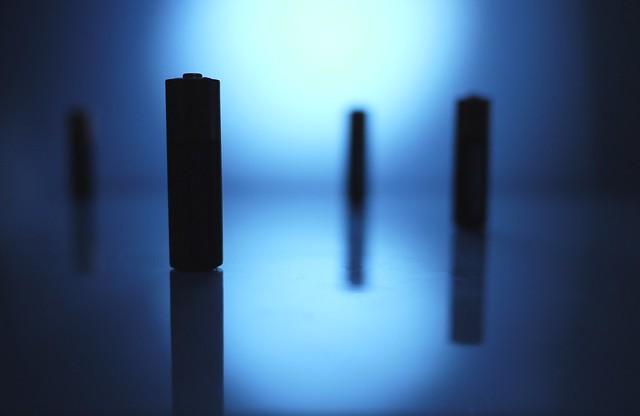Flying with LiPo Batteries 18650-Care for Batteries
Jan 04, 2020 Pageview:1938
Can you take the LiPo battery on a plane?
Yes, it is possible to take LiPo batteries on a plane. However, some rules and regulations guide passengers traveling with these cells and which act as safety precautions that ensure the safety of the batteries, passengers, and planes are in check. The IATA states that, if you’re carrying LiPo batteries on a plane, you should follow the rules and precautions below:
How can you take the LiPo battery on a flight?
It is essential to note that lithium-polymer batteries must be carried with you on board the plane as they are restricted from being put in checked luggage. This is because, with any temperature or pressure variations, the batteries are prone to catching fires. The following are some of the regulations that are put in place for traveling with LiPo batteries:
Quantities
The amount of LiPo batteries you are permitted to carry is based on watt-hours (Wh). This unit (Wh) signifies the lithium content in the cells by multiplying their voltages with its ampere-hours. IATA has set rules and regulations that permit you as the passenger on a plane to carry the LiPo cells with you in carry-on luggage but prohibits people from including them in their checked baggage.
If your batteries are below 100Wh, then there are no restrictions on the number of batteries you are allowed to carry. If the cells lie between 100 – 160Wh, then you are only permitted a maximum of 2 battery packs. However, if the batteries are above 160Wh, then you will be prohibited from carrying them along as carry-on and will, therefore, be confiscated if you do.
Preventing short circuits
According to flight safety regulations, you are advised to avoid short-circuiting the cells because this tends to increase the risks of fires. One can accomplish this by simply putting the batteries in plastic bags. However, each battery should be in its bag to reduce the chances of short circuits and also make it easier to label. You can also wrap the batteries using bubble wrap which is a perfect insulator that prevents damages and thus, chemical distortions within the cells. Wrapping the batteries with bubble wrap also reduces the chances of electrical arcing as well as entry of moisture into the connectors.
Refrain from carrying old batteries
Old batteries are prone to intense or unstable chemical reactions within the cells due to many cycles and are therefore considered dangerous for transport on aircraft. Batteries that show signs of swelling or are damaged in any way should be crossed off your packing list. Also, avoid transporting that is deemed to be out of services after a short while later, and such cells can be identified if they do not hold more than 80% of their original capacity.
Using LiPo bags
It is required of every passenger traveling with LiPo batteries to place them in their LiPo bags as a safety precaution. You however, don’t need a separate LiPo bag for each cell before putting them into the containers you would’ve been expected to place them in plastic bags separately. Ensure that your LiPo bag has enough space depending on the number and size of your batteries.
What is the difference between a LiPo battery and a 18650 battery?
When it comes to 18650 batteries, we are generally referring to lithium-ion cells. These batteries are known to contain a lithium cobalt oxide liquid which acts as the electrolyte. They come in square cylindrical shapes and carry a diameter of about 18mm and a height of 65 m. Almost all types of the 18650 batteries are sold for assembly into battery packs due to essential functions or measures put in place by the battery’s protective circuit such as protection from overcharge and loading balance.
The batteries have been commonly and universally commercialized in laptop battery packs and smartphones, with an astonishing figure of more than 60% of mobile phones incorporating this type of battery type. It is portable with a wide range of applications in the battery industry.
On the other hand, Lithium polymer batteries, better known as lithium-ion polymer cells, are a similar rechargeable battery type of lithium-ion technology. The cells make use of a polymer electrolyte instead of a liquid electrolyte formed using high conductivity semisolid polymers. LiPo cells provide a much higher specific energy as compared to other types of lithium batteries and are applied in areas where weight is an essential consideration such as in smartphones or radio-controlled aircraft.
When compared to lithium polymer batteries, 18650 cells lack a protection circuit and this seems to be the most significant difference between the two battery types. We should however, consider the fact that each battery has its advantages and disadvantages, and the specifications or flaws in on can outshine the other. For example, LiPo cells’ safety performance is better than the one in 18650 batteries, but they also come at a much higher price.
Also, LiPo battery’s full and official name is lithium-ion polymer cells which makes it more of lithium-ion technology. This means that the two types of cells contain similar characteristics and majorly vary in the types of electrolytes used for the chemical composition. The appearance may also be identical to both cells incorporating a cylindrical shape, while in some instances, the 18650 batteries may be square-shaped.
Lithium-ion polymer cells also carry the following properties when compared to the lithium-ion 18650 batteries:
They can be shaped into thin batteries with a 15C cell whose voltage and capacity are 3.5V, and 400mAh made with a 0.5 mm thickness.
The cell is very flexible and thus can be distorted up to 900 around.
The capacity provided by LiPo cells is twice that of 18650 batteries.
The electrolyte cannot leak since it is made up of semisolid polymers; unlike 18650, lithium-ion batteries that contain a liquid electrolyte capable of leaks.
It is possible to get high voltages from the LiPo batteries because they don’t use liquid electrolytes, which require several cells put together to acquire the same voltage readings.
Conclusion
LiPo batteries, just like any other lithium-ion battery type, have their benefits as well as limitations. When flying with them on a plane, please be sure to observe the regulations set on them for your safety and that of others on the same aircraft because as small as these devices are, they can cause the most significant problems.
Leave Message
Hottest Categories
-
Hottest Industry News
-
Latest Industry News











